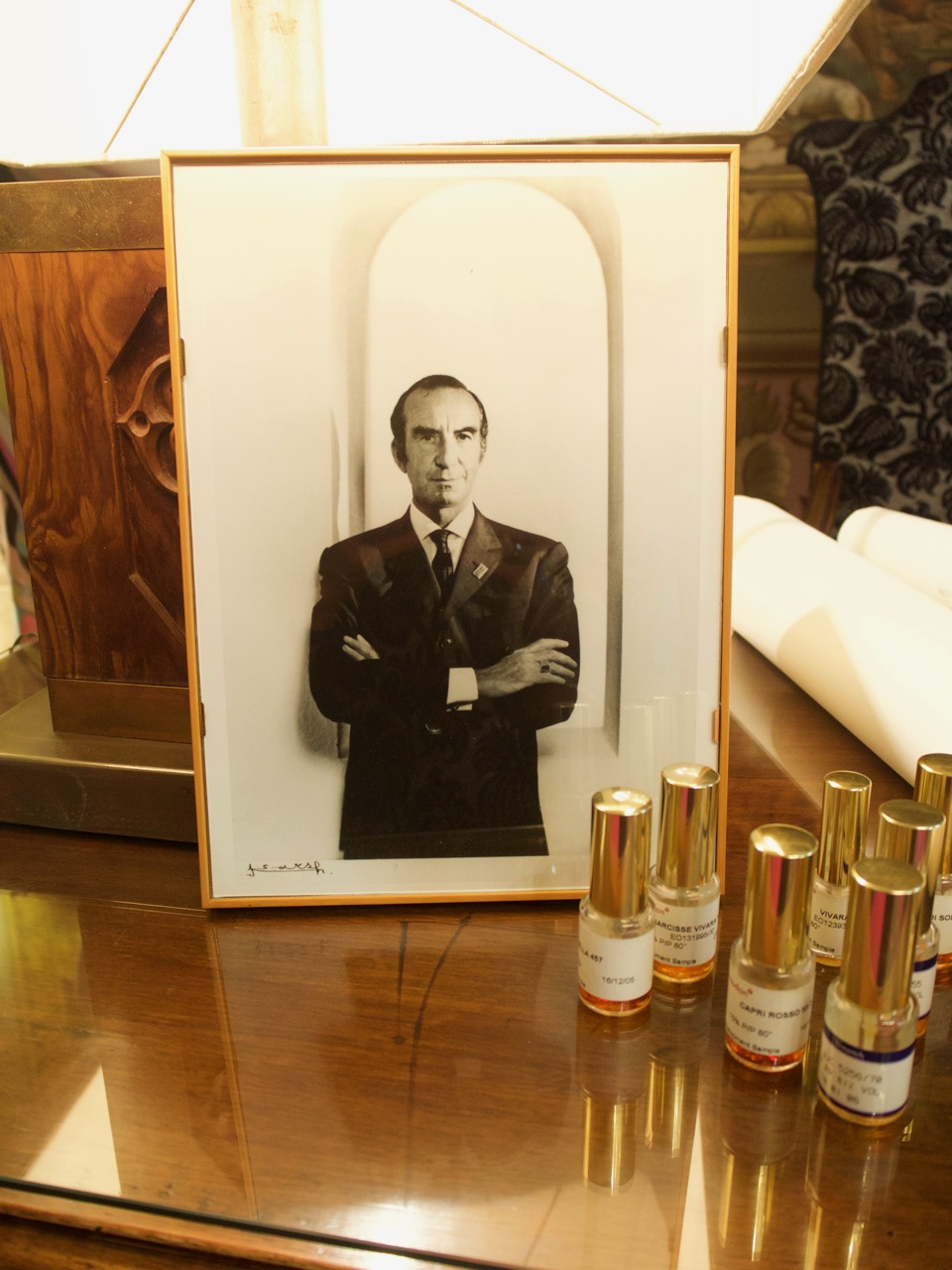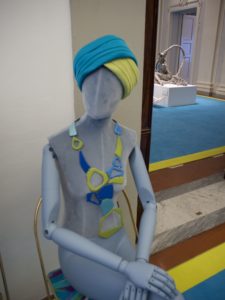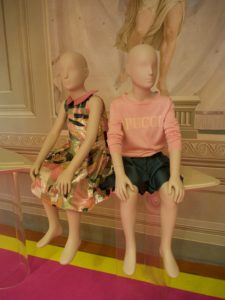A Florentine Visionary

Step into any Pucci store and the first thing that will capture your attention is the bright kaleidoscope pop of colour that not only hangs from the racks but also adorns the walls and carpets. Welcome to the world of Emilio Pucci, who founded his fashion house in 1947 before going on to achieve international acclaim with the glamorous post-war jet-set. His designs are still as popular today as they were in the 50’s, as his creations, while being classics are also still fashionable whether you are wearing vintage pieces or the latest season.
Born in Naples, into an aristocratic family, was the Marchese di Barsento. He would go on to call Florence his home but before Pucci entered the world of fashion, he was an air force pilot and an Olympic skier in 1934. An avid and accomplished athlete, he also raced cars, excelled in swimming, tennis and fencing. It was in Zermatt while giving ski lessons that he designed a streamlined ski outfit, that was photographed and then published in Harper’s Bazaar USA. This was to be the start of his new career and the start of the Pucci brand as Buyers, Editors and customers showed so much interest in his new and innovative designs. Even though his forte, in the beginning, was sports clothes, he soon moved into other fashions.
While he never considered himself a designer, it was Emilio’s sports connection that gave him an understanding of movement, comfort and the belief that clothes must move with the body. His desire was to give women this same freedom of movement in their everyday clothing, and he succeeded in designing clothing that gave women an elegance and sophisticated style while flattering the feminine curves.
“His designs featured sensual, free-flowing lines that followed the natural curves of the body – effortlessly elegant clothing which took women from day to evening…”
Stretch fabrics had been developed before the war but Emilio Pucci became famous for his intuition and vision with textiles. His stretch silk and cotton jersey garments were lightweight and women everywhere fell in love with his liberating clothing. His sleek designs were also wrinkle proof which made them the perfect travel attire for the new generation of modern women who fell in love with the elegant, stylish and incredibly comfortable garments.
Emilio also worked with chemists to produce around two hundred new colours which at the time did not even exist. Bold, vivid colours, that together created his signature graphic and abstract prints. He was inspired by the exotic locations he travelled to like Bali and Africa as well as the natural landscapes of Italy and the vivid blues of the Mediterranean. He was a true pioneer in the world of fashion and the International press crowned him “The Prince of Prints”.
In 1949, proving once again that he was ahead of his time, he produced a new collection of resort wear – before the concept of ‘Resort’ even existed. At that time, it was called ‘Boutique fashion’. He then moved onto his brightly patterned silk scarves which were sold in his first boutique located in the fashionable resort of Canzone del Mare on the Isle of Capri, a location symbolic with ‘La Dolce Vita’ since the 1950’s.
Below photos show the five material elements which Pucci innovated throughout his career; Straw, Fringe, Ruffles, Plait & Pearls.
- Straw
- Fringe
- Ruffles
- Plait
- Pearls
By the 1960’s, Pucci was given added status when Marilyn Monroe became a fan of Pucci’s solid coloured garments and as the decades passed, a dress in the distinctively patterned Pucci print, which used as many as sixteen colours in a single design, was the uniform of fashionable women everywhere in the world. Sophia Loren, Elizabeth Taylor, Lauren Bacall, Gina Lollobrigida and Jacqueline Kennedy Onassis were just some of the iconic women who wore and were photographed in Pucci designs. And again in the early 1990s pop icons such as Madonna were also fans of the brand.
At the peak of his career, Emilio’s distinctive prints, a mixture of geometric and art-nouveau designs could be found in towels, wall coverings, jewellery, glasses and he even designed six complete collections of airline uniforms for Braniff Airways between 1965 and 1974, the logo for a space mission, and a luxury car.
Emilio Pucci’s beloved city of Florence has also featured in his designs and the terracotta rooftops of Palazzo Pucci have made the perfect stage for many of his photo-shoots. Who could blame him when the magnificent Duomo sits as a back-drop! One of Pucci’s most well-known scarf designs from 1957 is the ‘Battistero’ design. Featuring a view of Piazza San Giovanni, the Baptistery and Giotto’s Bell-tower illustrated in gelato shades of orange, yellow and fuchsia. I personally will never forget when the Bapistry was actually ‘wrapped’ in a replica of this design during Pitti Immagine 2014. The artwork, called Monumental Pucci was made to celebrate the 60th Anniversary of Firenze: Hometown of Fashion.
After his passing in 1991, Emilio’s daughter, Laudomia Pucci, began to take over her father’s business. In April 2000, 67% of the company was acquired by the French luxury group LVMH, In a short time, the brand has soared once again on the international fashion stage.
In June 2018 during Pitti Immagine Uomo, Emilio Pucci and mannequin pioneer Bonaveri partnered up to celebrate history and innovation in an immersive showcase that delved into their individual realms of creativity and craftsmanship. The visual experience, ‘Bonaveri, A Fan of Pucci’, showed Emilio Pucci’s heritage and future told through Bonaveri’s artisanal excellence and creative depths. Below are some images from the event at Palazzo Pucci.
PALAZZO PUCCI
The Palazzo Pucci is one of the most important historic mansions in Florence. Built in the 15th century, it is located in the heart of the city, just a few steps from the Duomo, on via de’ Pucci (named after the family), It is the residence of the family and was the previous headquarters of the Maison until 2017.
After the Second World War in 1947, the Marquis Emilio Pucci set up his eponymous fashion brand within the Palazzo, housing the atelier, an iconic boutique and the legendary Sala Bianca – theatre of the fashion shows for over 40 years.
The Palazzo has recently gone through a refreshing refurbishment, bringing Pucci’s signature colours onto the walls and floor coverings. It’s the perfect compliment to the Renaissance architecture and brings a modern yet harmonious feel to each room.





















+ show Comments
- Hide Comments
add a comment